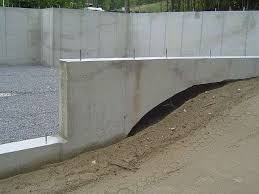Six Key Tips for Preventing a Flooded Basement
By Mark J. Donovan
|
|
Spring is notorious for being a rainy time of the year. In addition, there is the added issue with snow melt with colder climate areas. Put these two ingredients together, along with a basement, and you can often find yourself dealing with a flooded basement in the spring.
There are several things you can do, however, to mitigate the risk of a flooded basement this spring. Most of them take little effort and money. You just need to make sure to do them before spring arrives in your particular area of the country. |
Check the Sump Pump
If your basement has a below-grade sump pump in it make sure that it is properly working and that there is no debris in the pump well around it. If you use a portable pump make sure to install it in the lowest area of the basement and connect it to a grounded outlet. Also note that power is absolutely essential for running a pump. Consequently you may want to consider installing a backup generator on the property to ensure the pump can operate even when there is a power outage.
Check the Basement Windows and Install Window Well Covers
If you have below-grade basement windows install acrylic basement window well covers to prevent water from falling into them and inevitably working its way into your basement. These types of well covers enable light to still flow into the basement while at the same time eliminating another possible inlet for water penetration into the basement.
| Repair Foundation Wall Cracks
Inspect the interior and exterior of your basement foundation walls for cracks. If you notice small cracks in the interior of the basement then fill them with a cement sealer or epoxy. If you see exterior foundation wall cracks then you’ll need to dig down the foundation wall to the base of the crack and then fill the entire length of it with an epoxy or foundation wall sealer. Clean out the Septic Tank One of the worst types of flooded basement situations to deal with is when a septic tank backs up into a basement. |
 |
Spring is the perfect time of the year to have your septic tank inspected and pumped to prevent this type of flood situation from happening.
Flood Insurance
Lastly review your homeowner’s insurance policy and consider purchasing flood insurance, particularly if you have a finished basement. It’s little extra money for peace of mind.
For more help on Basement Additions, see HomeAdditionPlus.com’s Basement Remodeling Bid sheet. The Basement Remodeling Bid Sheet will help ensure that your hire the right contractor so that your basement remodeling project is done correctly and you get the project finished on time and budget.
Related Information
- How to Install a Basement Sump Pump
- How to Methods for Foundation Waterproofing
- Basement Mold Removal and Prevention Tips
Get Free Basement Waterproofing Price Quotes with No Obligation!
Fill out our 3-5 minute quick and easy form, and receive a free price quote on waterproofing from one of our prescreened and licensed waterproofing contractors. This process is free and there is no obligation to continue once you receive your waterproofing price estimate.

